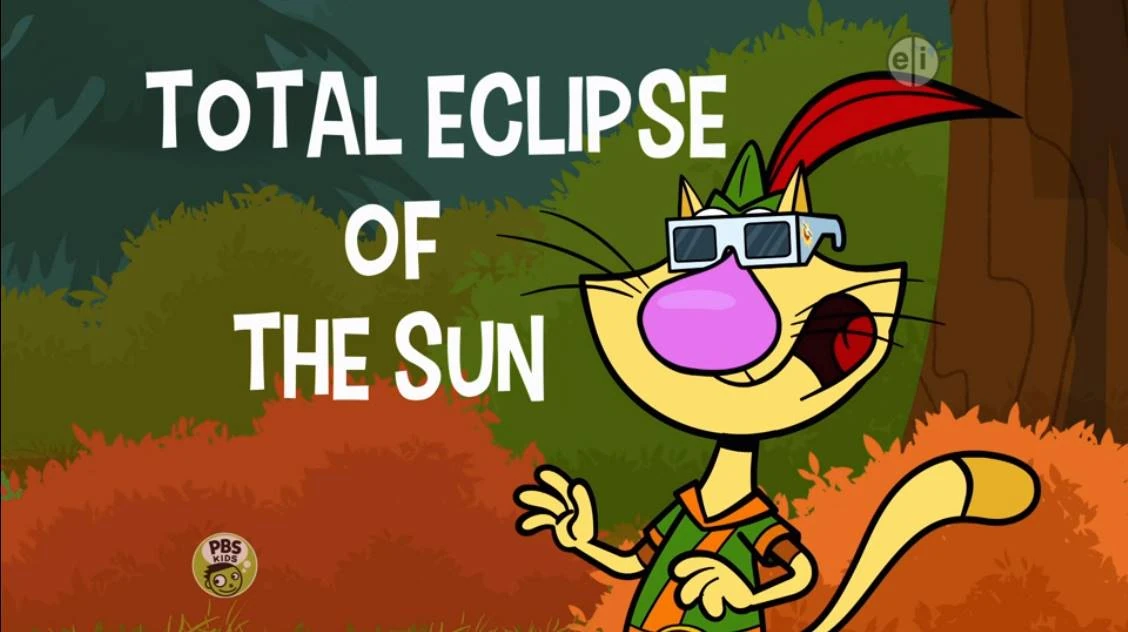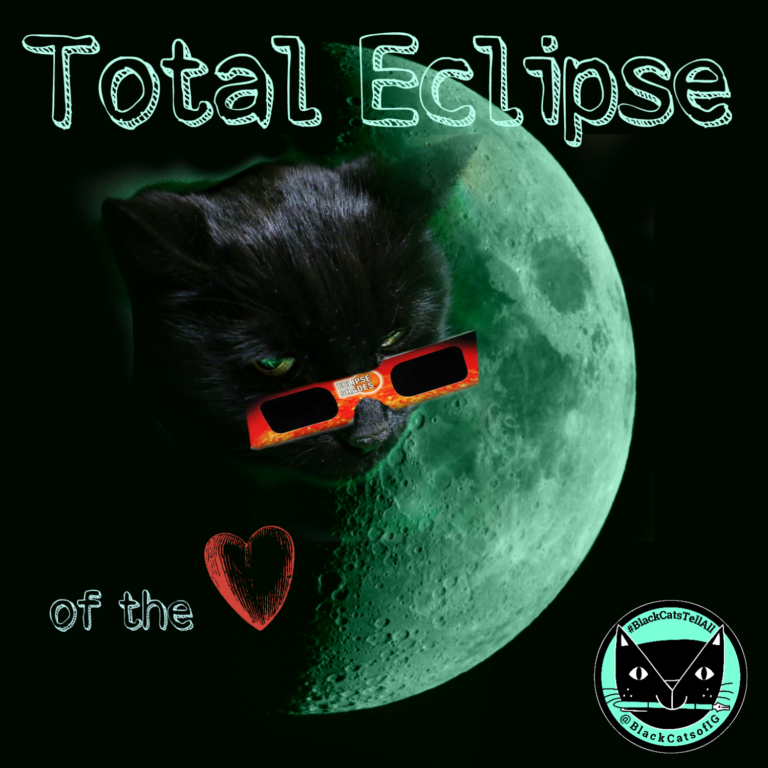Have you ever heard of the phenomenon called "Total Eclipse of the Cat"? Well, buckle up because this isn’t just any ordinary eclipse—it’s a celestial event with a twist, and cats are at the center of it! Imagine your furry friend becoming the star of the show as the moon aligns perfectly with the sun. Sounds wild, right? But trust me, this is no ordinary occurrence. It’s a spectacle that’s both scientific and downright adorable.
Now, you might be wondering, what exactly is a total eclipse of the cat? Is it some kind of astrology-meets-pets thing? Or is it just another internet meme waiting to happen? Well, my friend, it’s both! This phenomenon has been gaining traction among cat lovers worldwide, and it’s not hard to see why. Cats, with their mysterious and enigmatic nature, seem like the perfect creatures to bring a little magic to the skies.
So, whether you’re a hardcore cat enthusiast or just someone who enjoys a good celestial show, this article is for you. We’re diving deep into the world of total eclipses, feline behavior, and everything in between. Let’s get started, shall we?
Read also:How To See Other Viewers On Facebook Story Iphone The Ultimate Guide
What is Total Eclipse of the Cat?
How Do Cats React During an Eclipse?
The Science Behind the Eclipse
A Brief History of Cat Eclipses
Myths and Legends Surrounding Cats and Eclipses
Read also:Drew Carey Wife A Deep Dive Into The Love Life Of The Iconic Comedian
How People Celebrate the Total Eclipse of the Cat
Fun Facts About Cats and Eclipses
Tips for Observing the Eclipse with Your Cat
Biography of the Cat
Before we dive into the world of total eclipses, let’s take a moment to appreciate our feline friends. Cats have been around for thousands of years, and their mysterious behavior has fascinated humans for just as long. Below is a quick bio of the average domestic cat:
Cat Biodata
| Species | Felis catus |
|---|---|
| Average Lifespan | 12-18 years |
| Weight | 5-10 pounds (varies by breed) |
| Habitat | Domestic environments, urban areas |
| Temperament | Independent, curious, affectionate |
Now that we’ve got the basics down, let’s explore how cats interact with the world around them, especially during celestial events like eclipses.
What is Total Eclipse of the Cat?
The term "Total Eclipse of the Cat" may sound like something out of a fantasy novel, but it’s actually a real phenomenon that combines science and whimsy. Essentially, it’s when a cat becomes the focal point of an eclipse, either through its behavior or its presence during the event.
Think about it: during a total solar eclipse, the moon passes between the Earth and the sun, casting a shadow over our planet. Cats, with their keen senses and unpredictable behavior, often react in fascinating ways. Some might hide, others might meow louder than usual, and a lucky few might even seem to "pose" for the occasion.
This phenomenon has captured the imagination of cat lovers worldwide, leading to a surge in social media posts, videos, and even cat-themed eclipse parties. It’s not just about the science—it’s about celebrating the bond between humans and their feline companions.
How Do Cats React During an Eclipse?
Common Behaviors
- Hiding: Many cats instinctively seek shelter during an eclipse, as the sudden dimming of light can be unsettling.
- Vocalization: Some cats may meow more frequently or loudly, possibly in response to changes in their environment.
- Curiosity: A few cats might become more curious and explore their surroundings, drawn to the unusual conditions.
While there’s no definitive answer to why cats behave this way, scientists believe it’s a combination of their natural instincts and heightened senses. Cats are incredibly perceptive creatures, and even the smallest change in their environment can trigger a reaction.
The Science Behind the Eclipse
Let’s talk science for a moment. A total solar eclipse occurs when the moon completely covers the sun, casting a shadow over a portion of the Earth. This event is relatively rare and can only be seen from specific locations on the planet.
According to NASA, total solar eclipses happen roughly once every 18 months, but the path of totality (the area where the eclipse is visible) is usually narrow. This makes them a special occasion for both scientists and stargazers alike.
Interestingly, animals—including cats—often exhibit unusual behavior during an eclipse. This is because the sudden change in light and temperature can disrupt their normal routines. Scientists are still studying this phenomenon, but early findings suggest that animals may be more sensitive to environmental changes than previously thought.
A Brief History of Cat Eclipses
Believe it or not, the connection between cats and eclipses dates back centuries. In ancient cultures, cats were often seen as mystical creatures, capable of communicating with the divine. During an eclipse, these beliefs were amplified, leading to a variety of rituals and ceremonies involving felines.
For example, in ancient Egypt, cats were revered as sacred animals and were often depicted in artwork alongside celestial events. The Egyptians believed that cats had the power to ward off evil spirits during an eclipse, making them an essential part of their rituals.
Fast forward to modern times, and the tradition continues. Today, cat lovers from all over the world gather to celebrate the "Total Eclipse of the Cat," sharing photos and stories of their furry friends during these celestial events.
Myths and Legends Surrounding Cats and Eclipses
Throughout history, cats have been the subject of countless myths and legends, especially when it comes to celestial events. Here are a few of the most interesting ones:
- China: In Chinese folklore, it was believed that a celestial dragon was eating the sun during an eclipse, and cats were tasked with driving it away.
- Greece: The Greeks thought that eclipses were a sign of impending disaster, and cats were often seen as omens of good or bad fortune.
- Native American Tribes: Some tribes believed that cats had the power to communicate with the spirits of the sun and moon, making them key players during an eclipse.
While these myths may seem far-fetched today, they highlight the deep connection between humans, cats, and the natural world.
How People Celebrate the Total Eclipse of the Cat
From cat-themed parties to social media challenges, there are countless ways to celebrate the "Total Eclipse of the Cat." Here are a few ideas to get you started:
- Host a Cat Eclipse Party: Invite fellow cat lovers over for a day of fun and games. Serve snacks shaped like cats and the sun, and don’t forget to dress your furry friend in eclipse-themed attire.
- Share on Social Media: Use hashtags like #CatEclipse and #TotalEclipseOfTheCat to join the global conversation. Share photos, videos, and stories of your cat’s reaction to the eclipse.
- Participate in Citizen Science Projects: Many organizations are studying how animals behave during an eclipse. Contribute to the research by sharing your observations and data.
These celebrations not only bring people together but also help raise awareness about the importance of preserving our natural world.
Fun Facts About Cats and Eclipses
Here are a few fun facts to impress your friends with:
- Cats have over 20 muscles in their ears, allowing them to pinpoint sounds with incredible accuracy. This makes them especially sensitive to changes in their environment during an eclipse.
- The word "eclipse" comes from the Greek word "ekleipsis," meaning "abandonment." In ancient times, people believed that the sun had abandoned them during an eclipse.
- Cats have been domesticated for over 9,000 years, making them one of the oldest companions to humans.
These facts not only highlight the unique bond between humans and cats but also underscore the importance of understanding the natural world around us.
Tips for Observing the Eclipse with Your Cat
If you’re planning to observe the next total eclipse with your cat, here are a few tips to make the experience enjoyable for both of you:
- Provide a Safe Space: Some cats may feel anxious during an eclipse, so make sure they have a comfortable place to retreat to if needed.
- Use Eclipse Glasses: While cats don’t need protective eyewear, it’s important to use proper eclipse glasses if you plan to observe the event directly.
- Document the Experience: Take photos or videos of your cat’s reaction to the eclipse. Who knows, you might just capture the next viral moment!
By following these tips, you can ensure that both you and your feline friend have a safe and memorable experience.
Upcoming Total Eclipse Events
Mark your calendars for the next total solar eclipse, scheduled to occur in April 2024. This event will be visible across parts of North America, making it a perfect opportunity to witness the "Total Eclipse of the Cat" firsthand.
Stay tuned for updates and announcements from local astronomy clubs and organizations. Many groups host viewing parties and educational events leading up to the eclipse, providing a great way to learn more about this fascinating phenomenon.
Conclusion
And there you have it, folks—a deep dive into the world of the "Total Eclipse of the Cat." From ancient myths to modern celebrations, this phenomenon has captivated the hearts and minds of cat lovers everywhere. Whether you’re a seasoned astronomer or just someone who enjoys a good cat meme, there’s something for everyone in this celestial event.
So, the next time an eclipse rolls around, don’t forget to include your furry friend in the celebration. Who knows? You might just discover something new about your cat—and yourself—in the process. Now, go out there and share this article with your friends. Trust me, they’ll thank you for it!


